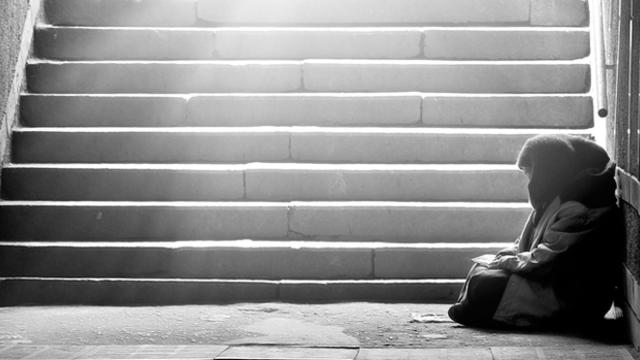Shocking facts about poverty in Brampton
Published November 4, 2019 at 8:07 pm

For many years, homelessness and poverty were thought to be urban issues that affected people outside of cozy bedroom communities, but with the Region of Peel (which is comprised of Brampton, Missi
For many years, homelessness and poverty were thought to be urban issues that affected people outside of cozy bedroom communities, but with the Region of Peel (which is comprised of Brampton, Mississauga and Caledon) growing and urbanizing (and getting progressively more expensive) more people are struggling to get by.
Last year, the Region of Peel launched the 10-year 2018- 2028 Peel Poverty Reduction Strategy, which aims to mitigate and reduce the impact of poverty by tackling income security, economic opportunity and well-being and social inclusion.
Co-chaired by the United Way Greater Toronto and the Region of Peel, the Peel Poverty Reduction Committee is a collaborative network that includes residents, people with lived experience, poverty reduction advocates, academia, regional and local government, non-profit organizations and public sector organizations working together to address poverty.
While action is being taken to combat and reduce poverty by providing more affordable housing and reducing barriers to gainful and secure employment, there’s no question that the region has an uphill battle due, in many ways, to forces beyond its control–namely the red hot housing market and the fact that the cost of living has outpaced wage growth throughout most of Canada.
Here’s a quick–and upsetting–glance at poverty rates in the region:
- 175,980 (12.8%) of Peel residents live in poverty
- 18% of children (0-17 years) live in poverty
- 16% of racialized communities (visible minorities) live in poverty
- 8.2 % of Peel residents are unemployed
- 19.7% of Peel youth are unemployed
- 13,597 of households are on the housing waitlist
- 70% of low-income households cannot afford housing
- 14% of households experience marginal, moderate or severe food insecurity
- Only 30.5% of low-income individuals have dental insurance
It’s not surprising that 70 per cent of lower-income households cannot afford housing, as even middle-income earners are finding it next to impossible to enter the housing market.
According to the Toronto Real Estate Board, the average house price in Mississauga (all home types combined) sits at $763,451. In Brampton, that number sits at $738,485.
According to real estate website and brokerage Zoocasa, a household in Mississauga that makes a median income of $83,018 would not be able to purchase median-priced real estate of any kind without having to save for years to amass the necessary down payment funds.
In Brampton, the situation is a little better, as someone who makes the city’s median income of $87,290 could still save up about $25,244 to make a downpayment on a condo in about 1.4 years.
Tenants don’t have it much better. According to a recent rentals.ca report, the average monthly rent for a one-bedroom home in Mississauga in September was $1,907, placing the city in sixth place on a list of 34 Canadian cities. The municipality finished seventh for average monthly rent for a two-bedroom at $2,301.
The same report also says the median rent in Brampton for all property types has risen more than $300 from $1,942 in the fourth quarter of 2018 to $2,250 in the third quarter of this year.

According to the region, there are currently 13,726 households waiting for subsidized housing, meaning that most will have to wait several years for an affordable place to live.
The region also says that 45 per cent of tenants spend over 30 per cent of their income on shelter costs, leaving little behind for other necessities such as transit/transportation, groceries, daycare and other costs.
As far as childcare goes, the region says the average annual childcare cost in Peel for a toddler and preschool child sits at $22,199.
The region also says that adults spend 5.9 per cent of a minimum wage monthly salary on a bus pass.

As far as income goes, 175,980 people live in poverty in Peel, meaning that the poverty rate of 12.8 per cent is a little below the Ontario average of 14.4 per cent.
What’s most disturbing is that 18 per cent of children 0-17 years of age live in poverty in Peel. Poverty also affects people of colour, as 16 per cent of people from racialized communities live in poverty in Brampton and Mississauga.
Those who need help can apply for social assistance, but it won’t cover too much in the way of housing costs. According to the region, monthly social assistance entitlement for a single person is $721. In Peel, 18,678 households use Ontario Works and 26,750 people receive Ontario Disability Support Program benefits.
Unemployment is also higher in Peel, sitting at 8.2 per cent (in Ontario, unemployment is 7.4 per cent). The youth unemployment rate is 19.7 per cent, and 48 per cent of people employed in Peel work part of the year or part-time.
According to the Peel Poverty Reduction Strategy, a 2017 Opportunity Equation report found that in 1980, low-income neighbourhoods made up only 2 per cent of all neighbourhoods in Peel.
As of 2015 over half (52 per cent) of neighbourhoods are low-income.
Are you struggling to survive in Brampton or Mississauga?
insauga's Editorial Standards and Policies advertising





